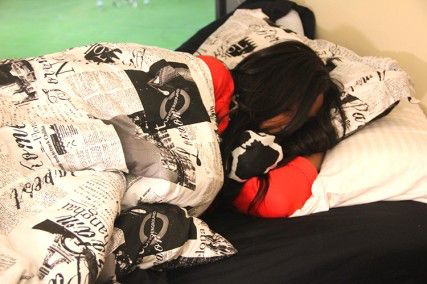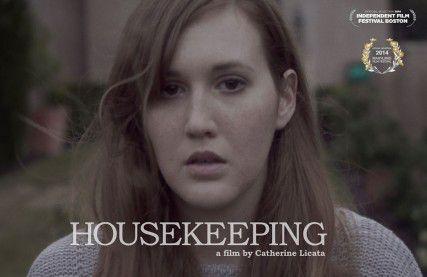
Researchers at the University of Michigan prove “beauty sleep” is, in fact, real
Great news, guys. Not only is sleep one of the most heavenly, sought-after scarcities of the college scene, but it turns out “beauty sleep” is a real thing.
Dr. Ronald Chervin of the University of Michigan recently spearheaded a study using sleep apnea patients to determine if a treatment called CPAP — or continuous positive airway pressure — could improve certain visual facial cues that make you look tired.
And it did.
The study and results
The study, published in the most recent volume of Journal for Clinical Sleep Medicine, looked beyond normal differences in appearance after a good night’s sleep or an all-nighter. Instead, researchers employed a precise face-mapping system used by plastic surgeons and a panel of independent appearance-raters to look at before and after pictures to determine if better sleep really leads to improved appearance.
Chervin, the director of Michigan’s Sleep Disorders Center, said the idea came from anecdotal evidence that staff noticed in patients during follow-up visits at the sleep center. After starting treatments, staff said the patients looked better overall. When Chervin realized no one had looked into the correlation, he decided to pursue the study himself.
Chervin teamed up with Dr. Steven Buchman, a University of Michigan plastic and reconstructive surgeon, to look into the correlation between sleep and appearance.
“At the University of Michigan, we have a collaborative atmosphere,” Buchman said during a phone interview. As head of the Craniofacial Anomalies Program at U-M, Buchman said he has found that many children with craniofacial anomalies often have obstructive sleep apnea because of the structural problems with their faces.
Buchman said Chervin came to him with the idea of the study because he knew Buchman has an interest in the topic due to his work with craniofacial anomaly patients.
“We started to talk about whether or not the notion that when you say to somebody, ‘Hey, you look tired,’ is there something to that that you could actually quantitate?” Buchman said.
To answer this question, Chervin and Buchman used photogrammetry, a precise face-measuring system. A three-dimensional camera first took photos of the 20 middle-aged patients being studied before they began treatment with CPAP and again under identical conditions a few months after the treatment. Photogrammetry can detect tiny differences in facial contours, providing the researchers with evidence of whether sleep and the CPAP treatment actually improved appearance.
Chervin and Buchman also collaborated with researchers at the Michigan Technological Research Institute, where Dr. Joseph W. Burns developed a method of mapping colors of patients’ skin.
These objective measures showed that well-rested patients had foreheads that were less puffy and had less redness in their skin. Redness was especially reduced in Caucasian patients. The researchers also perceived fewer wrinkles on patients’ foreheads, but as of yet have no way to measure these objectively because too many variables aside from sleep can create such wrinkles, such as facial expression and eye shape.
But these objective changes are not always noticeable to the ‘Average Joe,’ so the researchers used a panel of 22 raters to provide subjective data. The raters were asked to choose between two photos of the same subject, in which photo the patient appeared more attractive, alert and youthful, as well as which photo was taken before treatment and which was taken after.
The raters chose the after-treatment photo as the more attractive option two-thirds of the time. They also correctly identified the before and after photos two-thirds of the time. The researchers associated the reduction in redness of Caucasian patients’ skin with the raters’ tendency to choose the after photo as more “alert” or “attractive.”
Surprisingly, the researchers didn’t notice a big change in the visual cues usually associated with sleepiness: Dark circles and puffiness under the eyes did not change with treatment. What a bummer.
Sleep apnea and CPAP
According to the American Sleep Apnea Association, sleep apnea is “an involuntary cessation of breathing that occurs while the patient is asleep.” In other words, one’s body stops breathing on its own in the middle of the night (or during a much-needed nap). The cessations can happen hundreds of times in a single night and often last for a minute or longer. According to the National Sleep Foundation, more than 18 million Americans suffer from sleep apnea.
These cessations require the brain to rouse the body back into breathing. While this does not usually wake the sufferer, it does ruin their sleep, meaning a night of healthy rest is almost impossible.
There are several types of sleep apnea, among which the causes vary. Sometimes a sufferer’s brain just forgets to “tell” the lungs to breathe, and other times the sufferer’s airways just become blocked. This blockage is often caused by excess fat around the neck from being overweight, craniofacial anomalies or other factors.
There are several treatments for sleep apnea, one of the most common being CPAP. The treatment involves a mask that is worn snugly over the nose or the nose and mouth during sleep. The mask is attached to a machine that supplies pressurized air into the sleeper’s throat. This keeps the patient’s airways from collapsing so that breathing does not stop.
If left untreated, sleep apnea can lead to high blood pressure, heart disease, stroke, diabetes, depression and even car accidents from extreme daytime fatigue. Most sufferers, however, are not even aware that they have the disorder.
Buchman said he hopes that this study may lead a faster diagnosis of certain sleep disorders, including sleep apnea. He said that learning what signs chronic sleepiness produces visually may enable doctors to refer patients to get tested for sleep apnea, and that he hopes the technology can be improved to work as a “quick screener” to determine if a patient has the disorder. This would mean a much faster, easier diagnosis and potentially more people knowing they have the disorder.
Ryan Whitten, a senior in the College of Communication whose father suffers from sleep apnea, said the disorder went undetected for a while.
“He never noticed it [sleep apnea] until he went to the sleep clinic,” Whitten said. “He’ll stop breathing for some time while he sleeps for a couple of seconds.”
However, Whitten said his father’s sleep apnea is under control with the use of a breathing machine.
Blame your grades on sleep
“Some people may think that obstructive sleep apnea is an old person problem — very old or middle aged — an ‘It can’t be me’ sort of thing,” Buchman said. “… Besides just being sleepy, it may turn out that your inability to focus on a particular paper, your inability to do better in school, potentially could be an undiagnosed problem with obstructive sleep apnea.”
So now we can all tell our parents and future employers that that shameful GPA really was not our fault. It was just a painful side effect of our sleeping disorder, right?
If only. The sad fact is that for most college students, a poor GPA is probably the result of too many ‘Thirsty Thursdays,” too much caffeine, and averaging four hours of sleep a night. But it is true that most sleep apnea sufferers are unaware of their condition, something Chervin and Buchman hope to change.
“Those people that do have obstructive sleep apnea that are treated — often it can be quite life changing to them,” Buchman said. Chervin said he hopes the results of the study will provide further incentive for apnea sufferers to use CPAP, as some studies show that only 50 percent of patients use CPAP optimally.
Even if someone does not have sleep apnea, this study may force people to reconsider their sleeping habits.
Chervin said some studies have shown differences in appearance solely from sleep deprivation, but to most BU students, this was not a big surprise.
“They don’t call it beauty sleep for nothing,” said Rhaissa Germano, a College of Arts and Sciences junior. “You can always tell when someone looks tired.”
Share-Leigh Arneaud-Bernard, a CAS sophomore, agreed.
“Your body has more time to repair itself,” she said. However, Arneaud-Bernard said she averages about five-and-a-half hours of sleep per night and that being tired negatively impacts her schoolwork because it is difficult to stay awake in class.
Other students, such as CAS junior Danny Mack, find a little more time for rest, averaging about eight hours per night.
“It is hard to make time for sleep,” he said, “but it’s important so I make time for it.”
“College students are among the most sleep deprived people in our society,” Chervin said. Furhermore, he said it is possible that sleep deprivation attributes to the high rates of depression and poor grades on college campuses.
So do yourselves a favor and take a nap. It’s for science!





























































































































sanjay • Sep 23, 2013 at 11:56 pm
yeah….the article is quite intresting for science students.Till now i didnt even expect that our heart beat stops sometimes.where you call it as sleep apnea…..thx for your informtion sirr